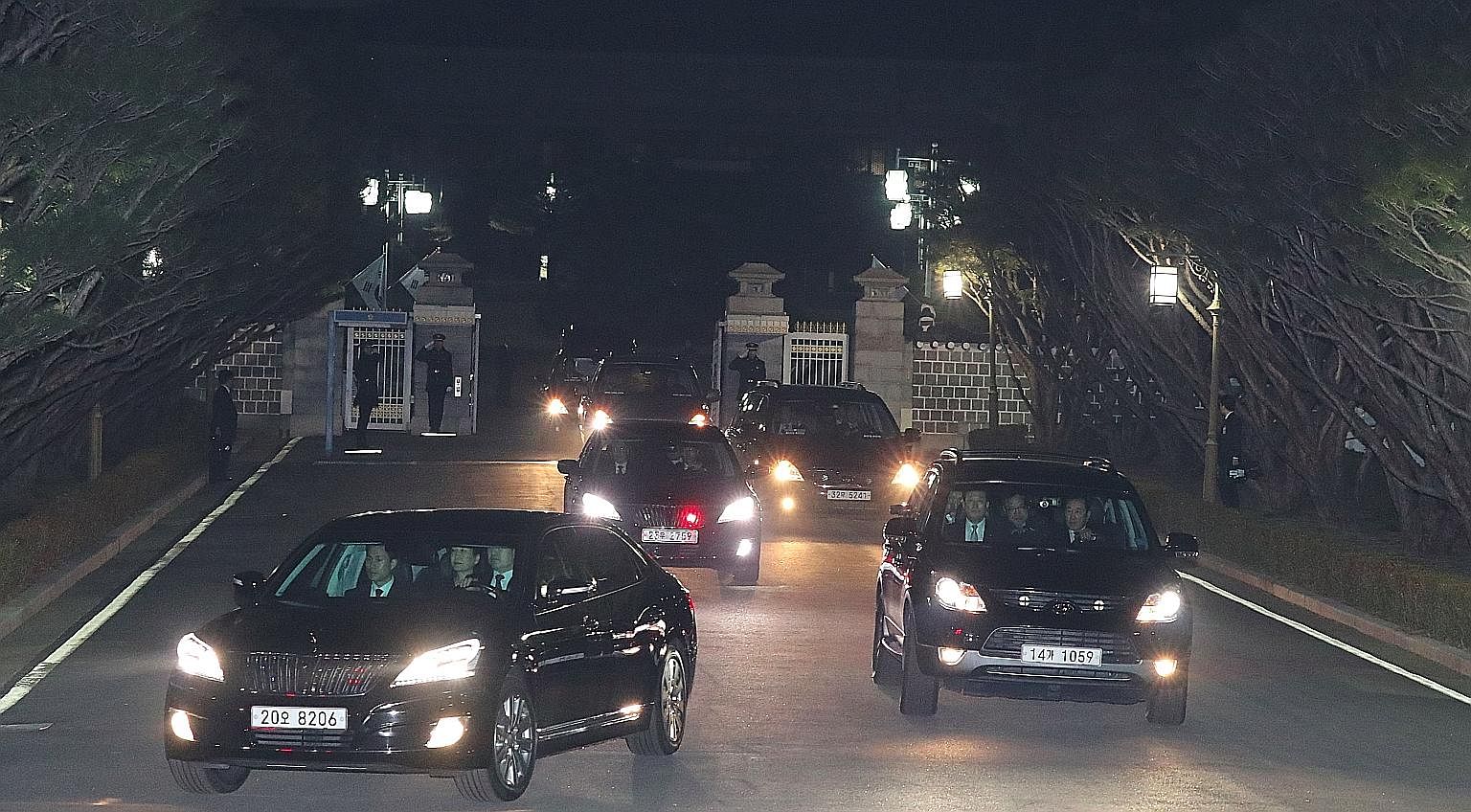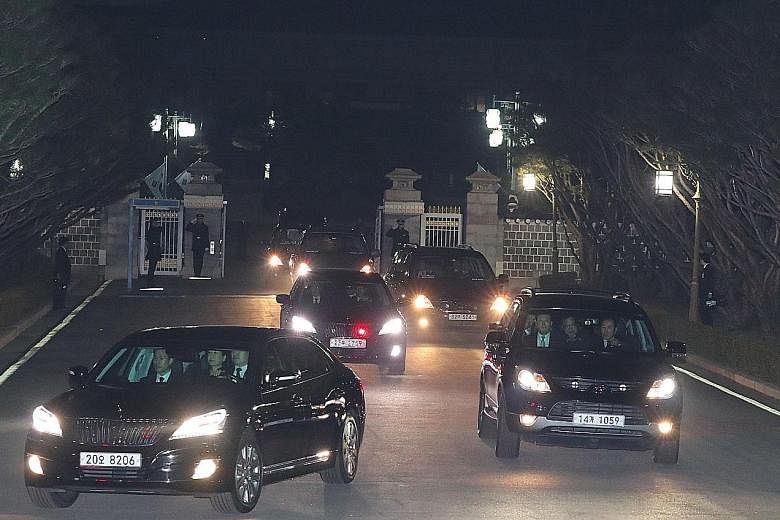South Korea's former president Park Geun Hye was officially removed from office last Friday, after the Constitutional Court affirmed her impeachment by the national assembly. It's a remarkable outcome for a relatively new democracy, and the scandal holds some important lessons for how impeachment can take place in a political culture deeply dominated by partisanship.
Ms Park's removal depended on three key elements: peaceful, sustained popular protests; a corruption scandal so egregious even politicians from her party were forced to admit it merited impeachment; and an orderly constitutional process for removal that was followed to the letter. These elements arguably form a kind of blueprint for presidential removal, a process pretty similar to the one followed by Brazil in the impeachment and removal of its former president Dilma Rousseff in 2015 and 2016.
It's important to note that South Korea isn't a natural political environment for impeachment, because politics there is divided between two main parties: Ms Park's centre-right Liberty Korea Party is opposed by the centre-left Together Democratic Party. Both are descendants of earlier parties that go back to the period of democratisation in the 1980s. Including Ms Park herself, there have been six presidents since the declaration of the Sixth Republic, a useful shorthand for the onset of democracy. Of those, three were politically left-ish and three right-ish. A system that features just two major parties makes such removal difficult, because no party likes to see its own president removed from office.
And the South Korean legal structure doesn't make impeachment easy. Under the Constitution, an impeachment resolution against the president must be introduced by a majority of the national assembly. And a vote of two-thirds is required for the impeachment to pass.
But that's not the end of the process. The Constitutional Court must then adjudicate and affirm the impeachment. As laid out in the Constitutional Court Act of 1988, the court has to determine whether the president violated "the Constitution or laws in the performance of his/her duties". The law provides for oral pleadings and a hearing.
Taken together, the partisan structure of South Korean politics, the supermajority requirement in the national assembly and the reviewing role of the Constitutional Court make impeachment hard.

The process is harder than the American removal process. That requires impeachment by a majority of the House and conviction by two-thirds of the Senate, measures that bear a resemblance to the legislative part of the Korean process. But the judiciary has no decisive role in an American impeachment, except for the symbolic function of the Chief Justice of the United States presiding over the Senate trial.
In South Korea, popular protests against Ms Park were a major element in shifting her party's perception of its own interests, convincing members that they had more to lose by ignoring the president's unpopularity than to gain by toughing it out. In particular, it mattered very much that the protests were peaceful and orderly, and did not threaten the democratic process itself.
To be sure, there were also very large counter-protests in favour of Ms Park. While her opponents put perhaps two million people on the streets against her, the pro-Park forces got roughly a million in their largest protest. But the outpouring of public desire for Ms Park's removal clearly played a major role in changing her party's position.
The other major reason that the political calculus shifted was the nature of the corruption scandal that surrounded Ms Park. She is hardly the first corrupt official in South Korean political history. Close ties between the presidency and the owners of the major Korean conglomerates, or chaebols, go back to her father's era. But the scale of the wealth transfer from the chaebols to Ms Park's family and associates was big enough that it couldn't be ignored.
There were other, more sensational elements to the scandal, such as reports that a close friend of Ms Park's, who was at the heart of the bribery, was arranging shamanic rituals for Ms Park to facilitate communication with the dead. And there was the strange matter of Ms Park's apparent disappearance immediately after a ferry disaster that killed 304 passengers and crew.
But in the end, these details mattered less than the clarity of the corruption. Ultimately, 62 members of Ms Park's party voted for her removal. Added to the votes of major and minor opposition parties, this got past the two-thirds threshold for removal. That left the Constitutional Court's review as the final key element of the removal process. The unanimous decision by the Constitutional Court was not unexpected. But it provided a guarantee of the democratic legitimacy of the removal process. That legitimacy is what makes impeachment different from a coup. It's why Seoul Plaza is not Tahrir Square in Cairo.
Ms Park's supporters took to the streets again in the aftermath of the decision last Friday, and two of them died in the protests, one reportedly after falling from the top of a police bus.
Despite this deviation from the general peacefulness of the protests, the overwhelming likelihood is that the process will be seen as legitimate. The removal system worked. Other countries should be so lucky.
BLOOMBERG VIEW
•The writer is a professor of constitutional and international law at Harvard University. His books include Cool War: The Future Of Global Competition.

